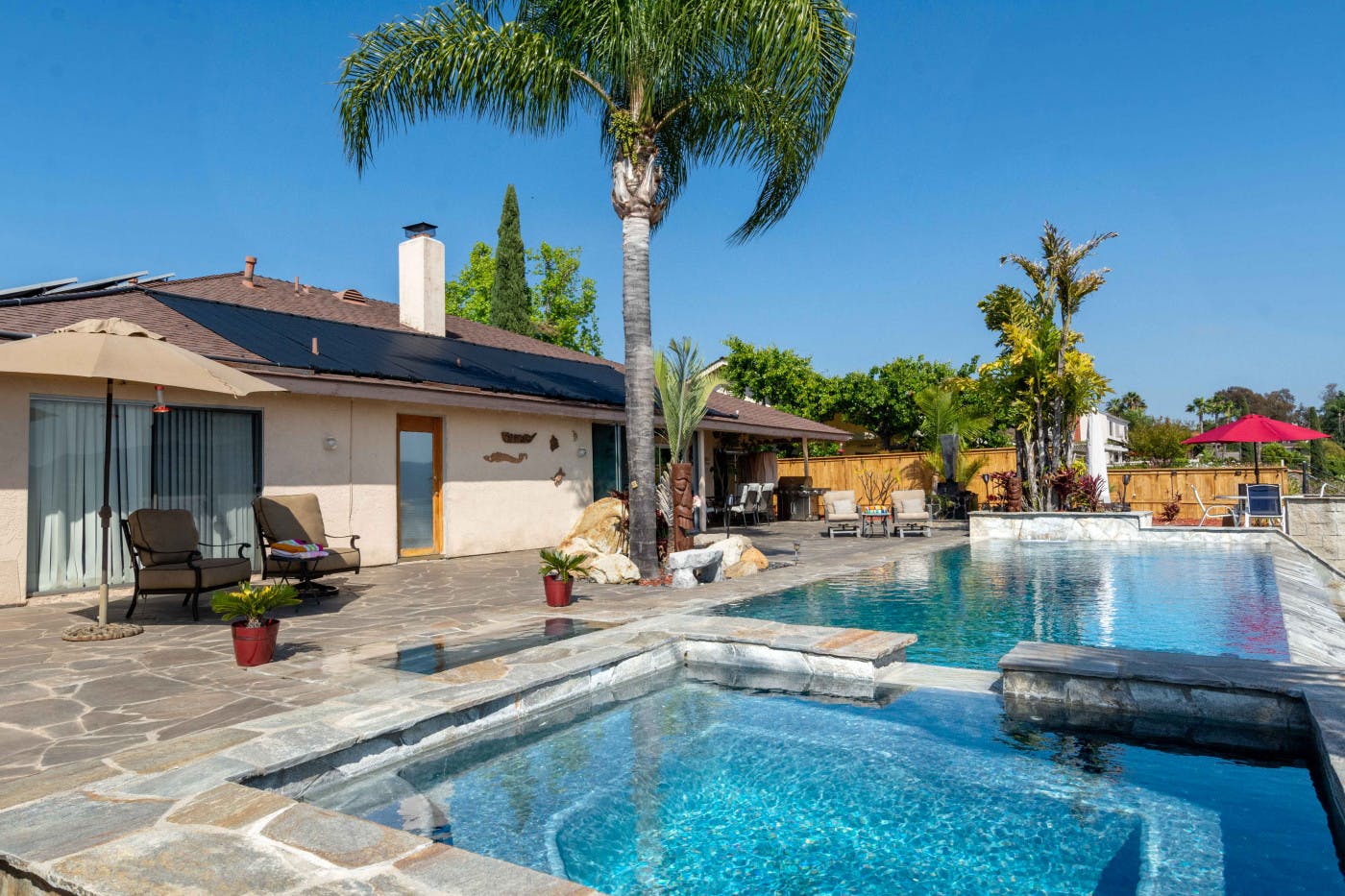Have you ever asked yourself, ‘How to lower alkalinity in pool?’ Owning a swimming pool can be a delightful experience, especially when you’re surrounded by friends and family during those warm summer days. However, maintaining your pool’s chemistry is essential for ensuring that it remains safe, clean, and inviting. One of the critical aspects of this maintenance is managing the pool’s alkalinity levels. In this guide, we will delve into the importance of alkalinity, how to measure it, and, most importantly, how to lower it when necessary.

Understanding Alkalinity in Your Pool
When we talk about pool chemistry, alkalinity plays a crucial role. Alkalinity refers to the concentration of alkaline substances in the water, primarily bicarbonates, carbonates, and hydroxides.
What is Total Alkalinity?
Total alkalinity (TA) measures the water’s ability to neutralize acids, effectively acting as a buffer for pH fluctuations. Ensuring the right level of alkalinity helps prevent the water from becoming too acidic or too basic.
Why is Alkalinity Important?
Maintaining proper alkalinity levels in your pool water is essential for several reasons:
- Stability of pH: Adequate alkalinity helps maintain a stable pH level, avoiding rapid changes that can harm swimmers and damage pool equipment.
- Comfort: Proper alkalinity ensures that the water feels smooth and prevents skin and eye irritation.
- Equipment Longevity: Balanced alkalinity levels help extend the lifespan of pool equipment by minimizing corrosion and scaling.

Ideal Alkalinity Levels for Pools
The ideal range for total alkalinity in a swimming pool is between 80 and 120 parts per million (ppm). Staying within this range will help keep the pH levels stable and ensure an optimal swimming environment.
Consequences of High Alkalinity
High alkalinity can lead to several issues, including:
- pH Drift: When the alkalinity is too high, it can cause the pH levels to rise, leading to an imbalanced pool chemistry.
- Scale Formation: Excessive alkalinity can result in scale deposits on pool surfaces and equipment, causing damage and reducing efficiency.
- Cloudy Water: High alkalinity can make the water appear cloudy, making it less inviting for swimmers.

How to Measure Alkalinity in Your Pool
Before addressing the issue of high alkalinity, it’s essential to measure your pool’s current alkalinity levels accurately. Here’s how you can do it:
Using Test Strips
Test strips are an easy and convenient way to measure alkalinity. Simply dip the strip into the water and compare the colors with the provided chart to get a reading.
Liquid Test Kits
Liquid test kits are another reliable method. They involve adding reagents to a water sample and observing the color change to determine the alkalinity level.
Digital Testers
Digital testers offer the most precise readings. These devices provide numerical results, eliminating the guesswork associated with color comparison.
Steps to Lower Alkalinity in Your Pool
Once you’ve determined that your pool’s alkalinity is too high, it’s time to take action. Here are the key steps to lower alkalinity effectively:
1. Prepare Your Pool
Before adjusting alkalinity, ensure that your pool’s water is circulating properly. This will help distribute the chemicals evenly.
2. Add Muriatic Acid or Sodium Bisulfate
Muriatic acid (hydrochloric acid) and sodium bisulfate (dry acid) are commonly used to lower alkalinity. It’s essential to follow the manufacturer’s instructions and wear protective gear when handling these chemicals.
3. Dilution Method
Slowly pour the acid into the pool while the pump is running. Aim to add the acid near a return jet to promote circulation. Be cautious not to add too much acid at once, as this can cause a sudden drop in pH levels.
4. Wait and Re-test
After adding the acid, allow the water to circulate for a few hours before testing the alkalinity again. This will give the chemicals time to disperse and stabilize.
5. Monitor and Adjust
If the alkalinity is still too high after the initial treatment, you may need to repeat the process until the desired levels are achieved. Regular monitoring is essential to maintain optimal chemistry.
Additional Tips for Maintaining Balanced Pool Chemistry
While lowering alkalinity is crucial, maintaining a balanced pool chemistry overall is equally important. Here are some additional tips:
Regular Testing
Test your pool water regularly, ideally once a week, to stay on top of any fluctuations in alkalinity, pH, and other chemical levels.
Proper Circulation
Ensure that your pool’s circulation system is functioning properly. Good circulation helps distribute chemicals evenly and prevents stagnant areas where imbalances can occur.
Consistent Cleaning
Keep your pool clean by regularly skimming debris, vacuuming, and brushing the walls and floor. Clean water promotes better chemical balance.
Beyond Alkalinity: Holistic Pool Care
Maintaining the right alkalinity is just one aspect of overall pool care. Here are other key factors to consider:
Maintaining pH Levels
pH levels should be kept between 7.4 and 7.6 for optimal swimmer comfort and equipment protection.
Controlling Calcium Hardness
Keep an eye on calcium hardness to prevent scaling and corrosion. Aim for a level between 200 and 400 ppm.
Using Stabilizers
Stabilizers help protect chlorine from sunlight degradation, ensuring that it remains effective in sanitizing the pool water.
Frequent Challenges in Pool Maintenance
Even with proper care, pool maintenance can sometimes be challenging. Here are some common issues and how to address them:
Cloudy Water
Cloudy water can result from high alkalinity, poor filtration, or inadequate sanitizer levels. Regular testing and cleaning can help prevent this issue.
Algae Growth
Prevent algae growth by maintaining proper sanitizer levels and brushing the pool surfaces regularly.
Equipment Malfunctions
Regularly inspect and maintain your pool equipment to avoid unexpected malfunctions. Address any issues promptly to prevent further damage.
Conclusion
Managing your pool’s alkalinity is essential for ensuring a safe and enjoyable swimming experience. By understanding the importance of alkalinity, regularly testing and adjusting levels, and maintaining a holistic approach to pool care, you can keep your pool water crystal clear and inviting. Remember, a well-maintained pool is a delightful addition to your home.
For more information on pool maintenance, you can refer to this comprehensive guide on cleaning your pool. Additionally, explore the benefits of creating a serene outdoor space with these tips on home repairs.
FAQs
What is the ideal range for pool alkalinity?
The ideal range for total alkalinity in a swimming pool is between 80 and 120 parts per million (ppm).
Can I use vinegar to lower alkalinity in my pool?
While vinegar is an acid, it is not recommended for lowering pool alkalinity. It’s best to use muriatic acid or sodium bisulfate.
How often should I test my pool’s alkalinity?
It’s recommended to test your pool’s alkalinity at least once a week to ensure balanced water chemistry.
As an Amazon Associate, I earn from qualifying purchases.

